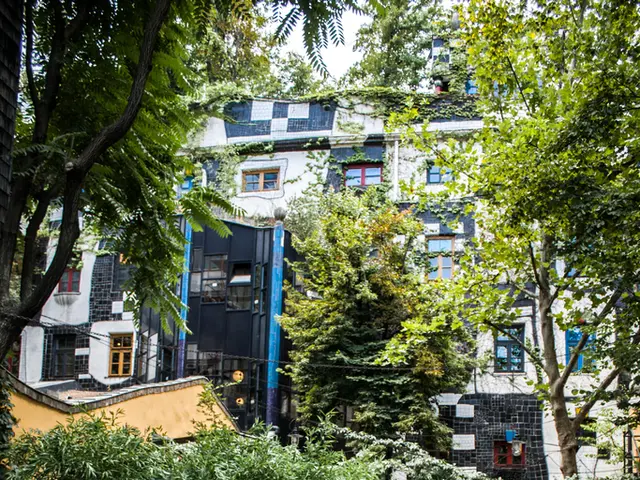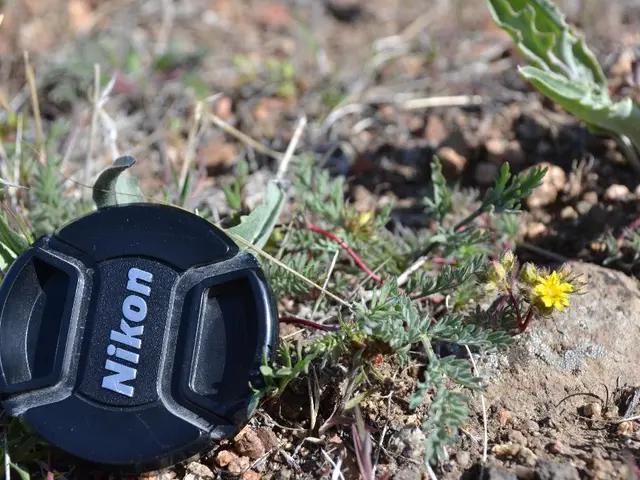Toyota's Meticulously Maintained Greenspace Unveils Hidden Tales
In an unexpected twist, Toyota, renowned for its automotive prowess, has also been making strides in the realm of environmental conservation. While the company's contributions to air purification technology and hydrogen fuel cell innovation have been widely documented, its role in developing plant-based air purifiers and low-growing grass varieties for environmental benefits is less publicized.
Toyota's foray into biotech began in the late 1980s, with a focus on using plants to clean the air. One of the most notable outcomes of this research is the development of TM9, a new, easy-to-manage variety of Zoysia tenuifolia grass. Standing at just 5 cm tall, TM9 requires less frequent mowing and maintenance than standard Zoysia lawns, making it an ideal choice for urban landscapes.
TM9 has been successfully implemented in various settings, such as Japanese gardens at Chubu Centrair International Airport and the rooftop greenery at the Toyota Group Pavilion at Expo 2005 Aichi. This low-growing grass variety offers not only aesthetic benefits but also environmental ones. For instance, TM9 can reduce greenhouse gas emissions by more than half compared to conventional Zoysia grass, as it absorbs carbon dioxide on a similar scale to large trees and sequesters it in the soil.
However, it's important to note that excess nitrogen not absorbed by grass is expelled as N2O, a gas 310 times more potent than CO2 in atmospheric warming. This underscores the need for careful management of nitrogen fertilizers in grass cultivation.
In a bid to standardize fertilizer use, Makoto Naruse, a Senior Expert at Toyota's Agriculture & Biotechnology Business Dept., aims to apply the principles of the Toyota Production System (TPS) to agriculture. Naruse, who spent 18 months growing vegetables to understand agricultural tasks and improve efficiency, faces challenges in this field but finds joy in the process, drawing on his experience from Toyota's manufacturing plants.
In addition to TM9, there are other initiatives aimed at leveraging plants for environmental benefits. For example, Gardenias and other varieties can be bred for larger stoma to promote the absorption of NO2 gas, an air pollutant.
While Toyota's environmental initiatives extend beyond plant-based solutions, its work on low-maintenance grass varieties like TM9 offers a promising avenue for decarbonizing urban areas. By greening spaces, we can not only alleviate the heat island effect but also capture significant amounts of CO2, as even small lawns can capture roughly the same amount of CO2 as forests.
Moreover, the benefits of TM9 extend to cost savings and reduced workload. Its slower growth means less frequent mowing, which in turn leads to cheaper maintenance costs and relief from midsummer mowing duties. Furthermore, turf that is cut less frequently retains more nutrients, requiring less fertilizer. This reduction in fertilizer use leads to a decrease in CO2 emissions related to the manufacturing process, and fewer grass clippings lead to lower emissions from incineration.
In conclusion, while Toyota's environmental benefits primarily come through technological innovation, its work on low-maintenance grass varieties like TM9 presents an exciting opportunity for sustainable urban landscaping. As more detailed information becomes available, especially regarding botanical or plant-based environmental projects, it would provide further insights into Toyota's green initiatives.
- Toyota's environmental initiatives, aside from technology, include research in achieving environmental benefits through plants, as seen in their development of low-maintenance grass varieties like TM9.
- The implementation of TM9 grass in Japanese gardens and rooftop greenery stands as an example of how plant-based solutions can offer both aesthetic and environmental advantages, such as reducing greenhouse gas emissions.
- Beyond the TM9 grass project, Toyota is also exploring ways to leverage plants for air pollution mitigation, such as breeding Gardenias with larger stoma to promote the absorption of nitrogen dioxide air pollutants.




